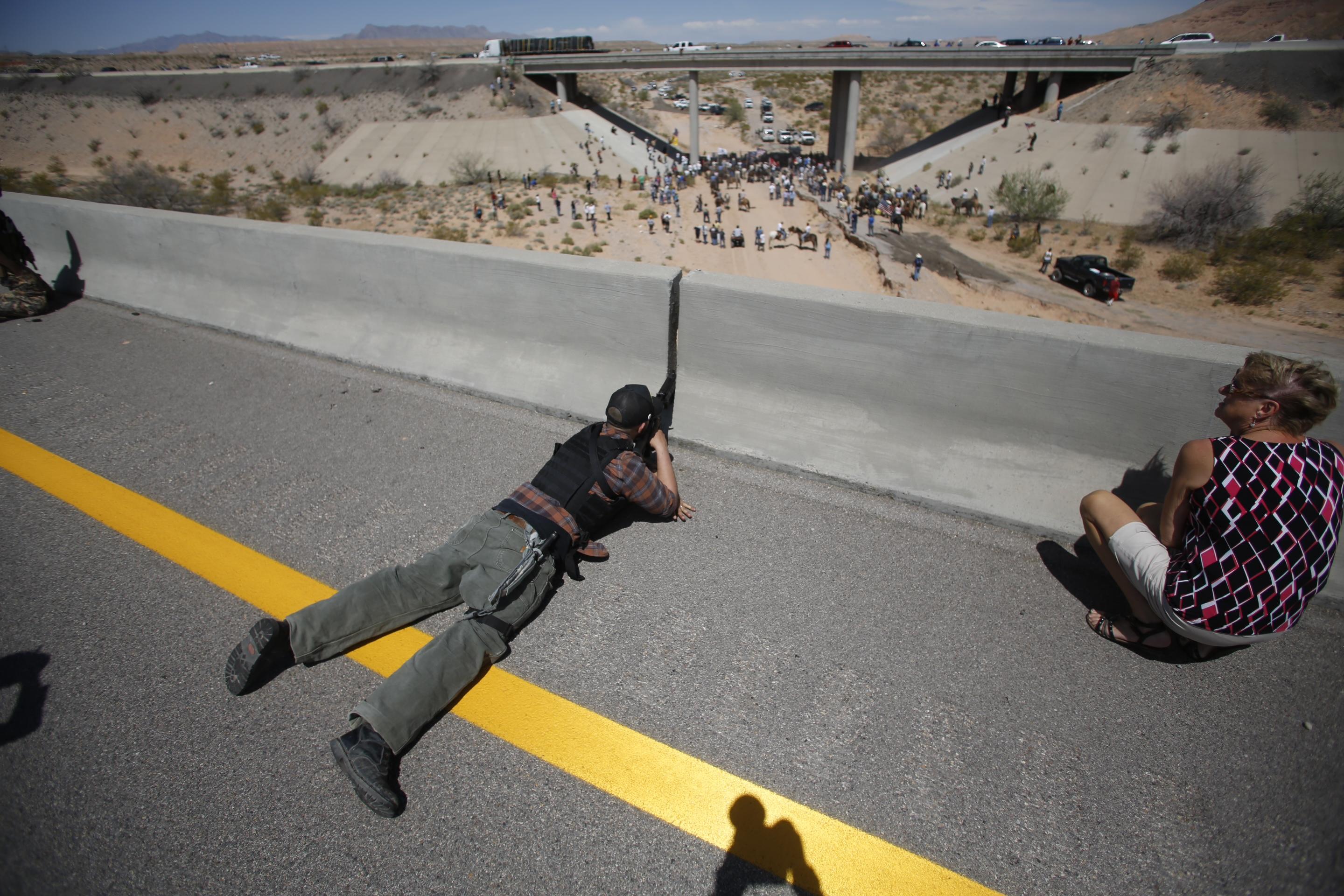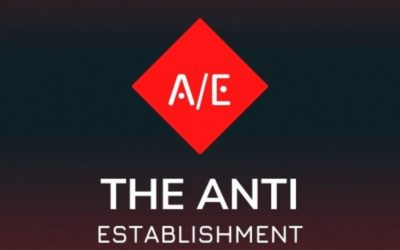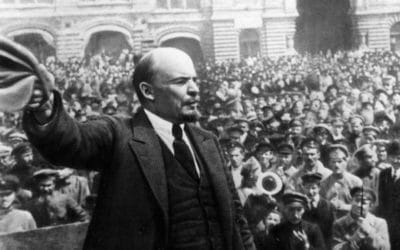Eric Parker from central Idaho aims his weapon from a bridge as protesters gather by the Bureau of Land Management's (BLM) base camp, where cattle that were seized from rancher Cliven Bundy are being held, near Bunkerville, Nevada in this April 12, 2014 file photo.
We were on a bridge in southern Nevada in the midst of a tense standoff between the BLM and a group of angry ranchers, militia members and gun-rights activists. It seemed as if we were a hair's breadth away from Americans killing Americans right in front of me. This showdown had come after the BLM started rounding up cattle belonging to rancher Cliven Bundy, who had been letting his animals graze illegally on federal land for over 20 years.
I found myself in the photographer's typical position when covering standoffs - behind law enforcement. But just as I started feeling comfortable with my surroundings, a woman yelled out that there was an incident taking place below the bridge a couple hundred meters to the east, and I began sprinting that way with other members of the media. The weight of my camera gear slowed me down but I told myself I needed to keep running. I had to be at the scene as fast as possible.
It was already a surreal moment, here on a random stretch of highway in the Nevada desert, where men with weapons had taken up tactical positions on government officers something not seen in this country in decades as traffic whizzed by unaware. Sometimes cars would stop and people would step out to take pictures of the scene with their phones, as if it were just another roadside attraction. After a while it became apparent that the BLM was going to release the cattle to the protesters. The animals were freed, and no shots were fired. But the reality of how close to gunfire the situation had come sent a chill through me which I will never forget. - Jim Urquhart
REUTERS/Jim Urquhart (UNITED STATES - Tags: ANIMALS CIVIL UNREST AGRICULTURE CRIME LAW) - rp 18















